






|
2019 |
 |
 |
 |
 |
 |
 |
 |
|
| Yes. It happened, exactly like the O-MD crowd hoped: the E-M5 Mark III made it to the stores last month. Just like the OM-D enthusiasts (and not only) hoped/expected, and in time for the Christmas (a.k.a. winter) shopping spree. This time Olympus nailed it. This is not just another Mark++ update (to use a common programming notation), as some of the new and/or improved features are quite significant. A few were originally available only in the OM-D top-shelf, E-M1 models (original, Mk.II, and/or E-M1X). The most notable improvement in the latter group is the dual (contrast- and phase-detection) autofocus capability. This is generally a good thing to have, but for users of legacy Four Thirds (non-Micro) lenses it is a must, making them AF-compatible with μFT bodies. If you have, for example, invested $7,000 in the ZD 300mm F/2.8 ED by Olympus, you really need a compatible body. For more on the dual AF see (for starters, at least) the Autofocus section of my original E-M1 notes.
| 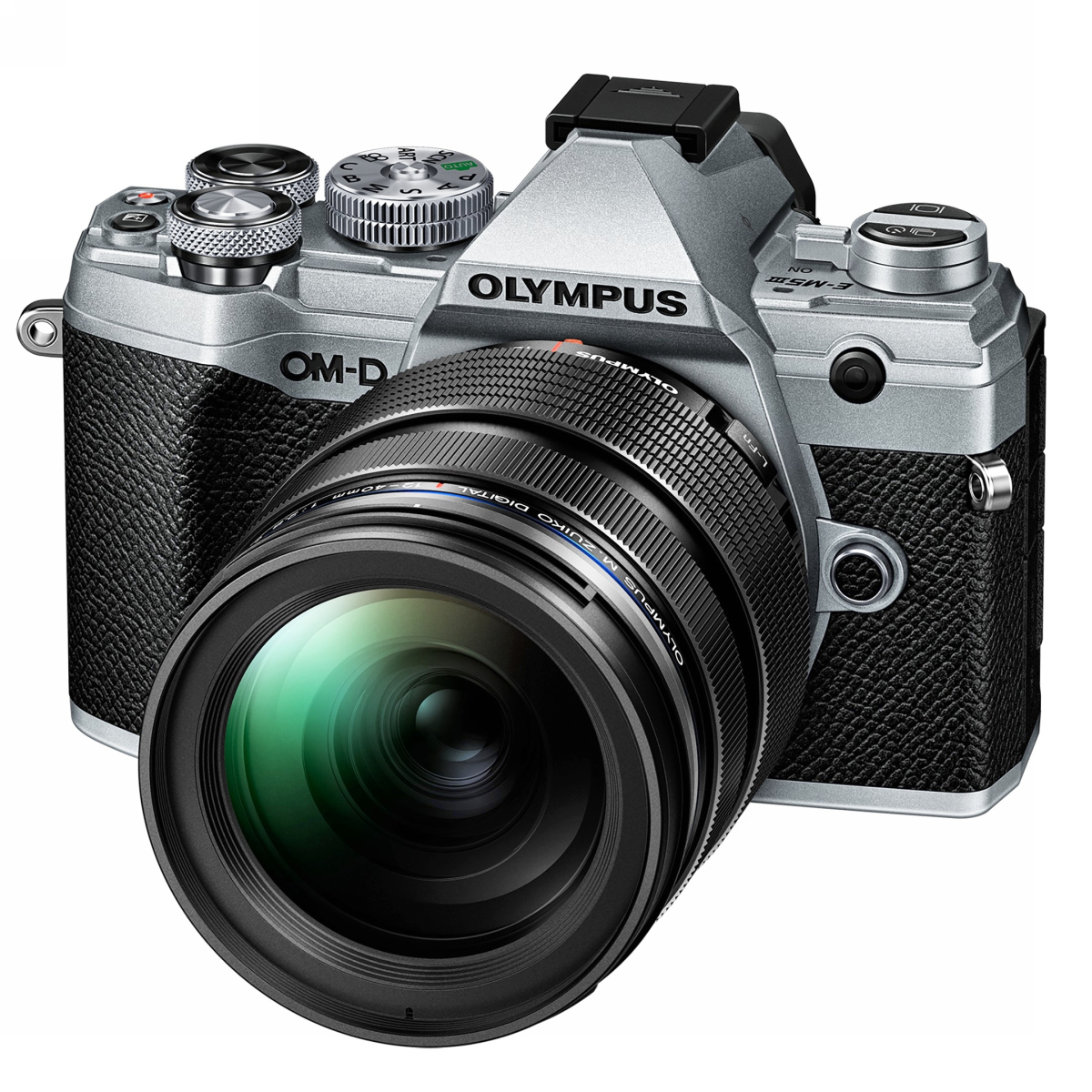
Olympus E-M5 Mk.III, MZD 12-40/2.8
|
By the way, my Timpooneke Trail gallery of old Kodachromes scanned with the E-M1 Mk.II (see below) is done, sort of, both color and monochrome. I insist you have a look.
| ||
|
At long last, I've got a decent slide copier for my OM-D system. It is based on the DMZ 2.8/60 Macro lens, Nikon slide copy attachment, a few filter-threaded rings and a small LED light panel. And yes, I am quite happy with the results; here is an example from the first session.
| I'm posting now a brief description of the contraption; a full write-up will have to wait a few weeks. This picture is from a 1985 hike on Timpooneke Trail to Mt. Timpanogos in Wasatch Mountains, Utah, we did with Jerry Elbert, a friend and co-worker. These were the days. (See the Swapper for a B&W version, which I prefer.)
| 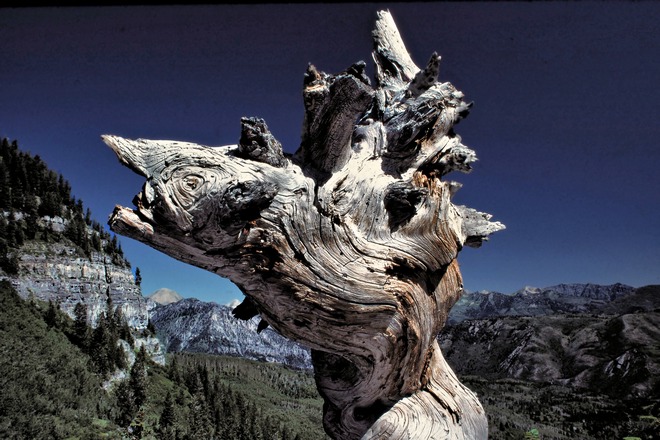
Original: Minolta XD-5, MD Rokkor 50 mm F/1.7, Kodachrome 64 | |
|
Time for omni-aspect sensors? Shooting in portrait orientation without having to rotate your camera would be nice. This article is a small study of feasibility, which I have been planning to write since February — after being disappointed with Olympus going for a 'vertical grip' in the E-M1X.
| The solution is relatively simple; for Micro Four Thirds it calls, in the simplest version, for a 33% increase in the imager height. For a decent viewing experience, the height of the EVF screen should also gain the same percentage. The concept is so obvious that there must be, I'm sure, some camera makers working on it now. Maybe not Canon or Nikon; but perhaps Fujifilm, Olympus or Panasonic? Panasonic uses one of these schemes in their Lumix DC-GH camera line — but without the portrait orientation capability this is not much of a breakthrough I'm waiting for. I'm still waiting for the real thing.
The Snooper accessible by clicking on this picture shows frames
| 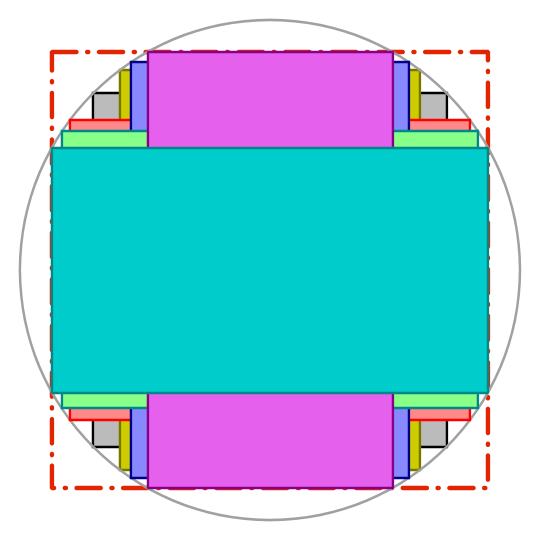
The μFT image circle and frame outlines for the most common aspect ratios. | |
|
Picture of the week: The backlit keyboard of my old Alienware laptop. Shot with a legacy Four Thirds 50/2.0 lens, the only FT lens I've been really using with my μFT system. (Or, at the moment, would like to use, since I left it behind in Maryland.)
| In the meantime, my Quick-and-dirty HTML article is done. Instead writing a sequel about embedding images, I just added the subject to the original text. Oh, this is also why it is now described as "A one-hour crash course", no longer a 30-minute one. Now I'm considering another sequel: Style Sheets without Styles; enhancing capabilities of the original without affecting HTML files you might have invested in (well, almost: one line added per file). Stay tuned.
| 
Olympus E-M1 Mk.II, ZD 50/2.0 Macro lens (FT) | |
|
Picture of the week: another urban sunset shot from my wife's balcony last June.
| The more I use this lens, the more I like it. It is, after all, sharper than I expected, and it handles direct flare very well. At EFL of 120 mm, it serves as a very handy medium telephoto: 135 mm was one of the most practical lengths on 35-mm film cameras. No, for portraits it will not match the ZFD 75/1.7, but its 2:1 (equivalent) maximum magnification remains unmatched: a horizontal field of view of 17 mm!
| 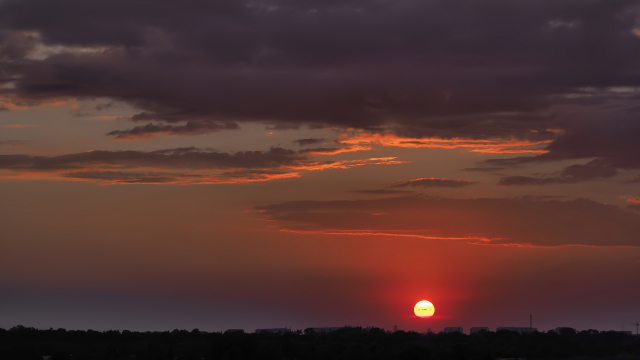
Olympus E-M1 Mk.II, MZD 60/2.8 Macro
|
HTML without pain. This is not related to photography, at least not directly: Quick-and-dirty HTML — a 30-minute crash course is something I promised to a friend (and then a few more), who wanted to do some personal or scientific Web authoring without significantly investing into learning the tools of trade.
The funny thing is that 24 years ago I started my Web affair from receiving a similar crash course (only verbal). see my 10th Anniversary article of 2005. This tutorial does not include tables, style sheets, or JavaScript; any of these would break my 30-minute limit. A simple but nicely-looking mechanism for inserting images will be added in Part II within a few weeks. | ||
|
Happy Fourth of July to all Readers from the U.S. (including the expats).
| Picture of the week: a high-school graduation in Wilmington, Delaware (2005). I came across it while cleaning up my archives. It is quite amazing, how relevant does this camera (or most of its Four Thirds siblings) stay after 15 years, capable, in good hands, of very satisfying results. If you are afraid eight megapixels is not enough, think again. The real-life resolution of 35-mm film (negative or slide, ISO 100) is about 6 MP, so 8 MP should be fine for full-image viewing or printing, even with some cropping. 12 MP is plenty and at 16 MP we enter the pixel-peeping realm (lens permitting). See Pixel Peeping Galore about digital vs. film resolution. Dating back to 2007, the article is still valid; some things don't change with fashion.
| 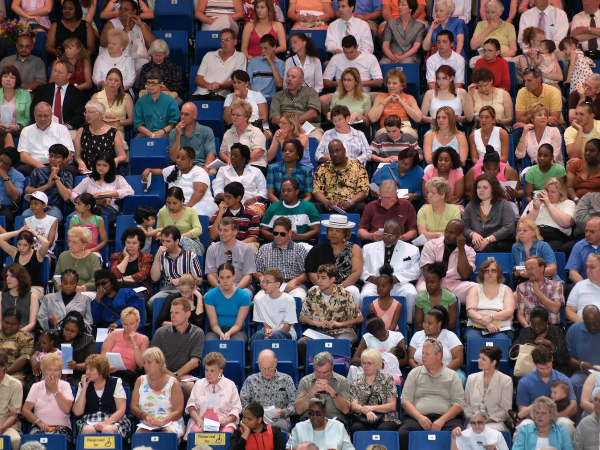
Olympus E-300 with Sigma 55-200/4.0-5.6 DC @128 mm
| The new firmware Version 3.0 for the E-M1.II has been out for a few days now. I already have it installed (with some problems, later about that). This is a rather major upgrade, focused mostly (if not entirely) on bringing to the E-M1.II some of the improvements introduced in the E-M1X. I realize this is an early version, but it should be already more useful than a common cut-and-paste job (at least I would like to think so). | ||
|
Picture of the week: Who said you cannot eat dangerously in Europe?
Here is the venom sac of the Carpathian Cave Lizard, cooked in a secret combination of berries, which is supposed to neutralize the poison.
| Very few restaurants in Poland have a license to serve this dish (some do that without), and you have to sign an affidavit, relieving them from responsibility for any adverse effects. Don't be afraid, though: the failure rate is below 5%, and less than half of these are fatal. Just avoid breaking the tubular ending; if it is already broken, send the dish back to the kitchen. By law, they have to take it, even if it's already half-eaten.
| 
Olympus E-PM2 with MZD 14-42/3.5-5.6 EZ @ 14 mm
| No, I did not expect you to buy the lizard story. Still, thanks for trying. In fact, the picture shows a dessert: buttermilk sorbet, pickled rhubarb cooked in raspberry juice, and pumpkin-seed oil. It is a part of my new, small Dinner Time gallery, shot last Saturday at the Powidok restaurant in Łódź, Poland. Our friends took us to this place just a week earlier, and we all liked it enough to sign up for a tasting-menu event coming in a few days, showcasing eight-courses created by chefs of this and two affiliated restaurants. plus two pastry chefs. The dinner met our expectations (which were set fairly high to start with) regarding flavors, presentation, service, and general attitude. While the experience was worth the effort and expense, this is about photographs, not about food. I just wanted to get a few casual, existing-light snapshots, but a cell-phone camera was out of question, so I ended up using my traveling-light μFT option: an Olympus Pen Mini with a pancake 12-42 mm zoom. No flash, no tripod, not even getting up from your chair. Not to mention, the existing light was a nightmare: a mix of late-afternoon daylight with both incandescent and fluorescent. No wonder I resorted to some postprocessing of my in-camera JPEGs, vignetting (sometimes with selective blur), a tad of local equalization, then some mid-tone and color adjustment.
So you thought this time you might get away without having to see a monochrome version of another of my photo galleries? No way, here it is, and if I had to keep just one B&W set, it would be a tough choice between Sturgis, SD and Łódź, Poland.
| Anyway, meet the lovely bar maid of Sturgis. The technique I'm using here is quite simple:
See also Is It All in Postprocessing? for a different use of LTM. To compare various amounts of it, look here.
| 
Olympus E-M1, MZD 12-40/2.8 @ 12 mm
| It is important not to overdo the LTM step. Try to keep it low enough to be just a tonal adjustment, not an obvious special effect. Also, so far I was unable to find any implementation of LTM working like the one in PSP (one of the reasons why I haven't switched to GIMP yet). | |||
|
Picture of the Week: a historic bike in a local museum, legendary Sturgis, SD. A few more of these beauties can be seen in my Sturgis Gallery Page.
| Some more (guesswork?) on the hand-held HR mode in the E-M1X: for this to work, the camera's IS has to either leave some shake uncompensated, or add some random compensation error. Ironic, but (probably) true; have a look. The first set of the MZD 60/2.8 Macro sample images is ready. I need at least two more sets to be more specific, but things are looking good and I'm getting better feelings about this lens. I also updated the μFT lens list.
| 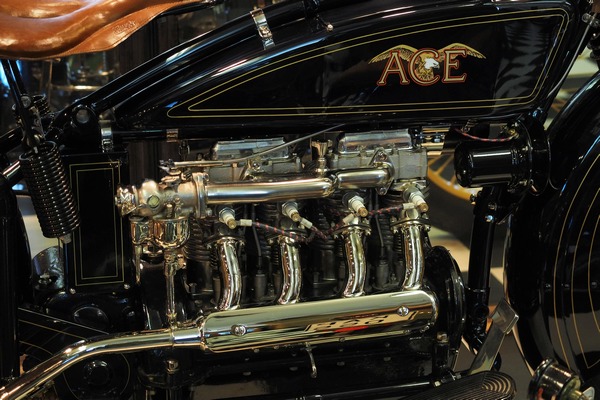
Olympus E-M1, MZD 12-40/2.8 @ 40 mm
|
About lenses. The new M.Zuiko Digital (is this the same as 'MZD'?) 12-200 mm F/3.5-6.3 ED looks like a strange animal. It is often dismissed as a cheap mass-market superzoom, which it certainly isn't: not at $900, not with 16 elements (three aspherical and seven high/low refraction glass), and not with dust- and drip-proofing.
At 455 g and 100 mm it is lighter and shorter than my favorite, the MZD 12-100 MM f/4.0 ED IS PRO (561 g, 116 mm), and provides focal length range more attractive than the MZD 14-150 mm F/4.0-4.6 (or two 14-140 mm lenses by Panasonic and Leica). The image samples I've seen are sharp enough (for most uses) at F/8, especially near the frame center. This is reported to get worse above 100 mm, but some of the images shot in that range at F/8 look nicely sharp to me, no complaints. Besides, if you are limited for some reasons to a single-lens outfit on a trip, the only alternative is the 12-100 (and, maybe, the 14-150, but 12 mm is important!). Therefore, when deciding on a sole travel lens, my choice would depend on what I need more at that particular occasion: critical, first-class resolution (12-100) or doubling the zoom range (12-200). Take it or leave it. I'm very, very tempted. | ||
|
| I've been using the MZD 60/2.8 Macro lens for a few months now, for both regular shooting (macro or not) and image samples. Here is one, shot yesterday. Click on the picture for a screen-sized version or see the original in-camera JPEG. The tip of the nose is about 5 mm ahead of the eye sockets; image width — just below 50 mm. The "AF on demand" was set on the left eye (your left, not cat's). This is one of the better Olympus μFT lenses. Comparing it against the (non-Micro) ZD 50/2.0 Macro will have to wait; now let me just say I like it. Except for one thing: the AF range limiter dial, which works fine only if you don't have to turn it or to read its position. Anyway, the first batch of sample images has been just posted, with more to come.
| 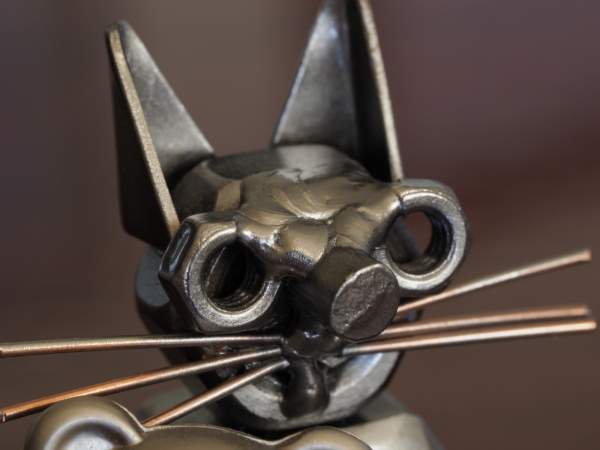
Olympus E-M1.II with MZD 60/2.8 Macro
| Interestingly, this is one of very few lenses supporting focus shift photography on Olympus cameras (called bracketing, no sirree, this ain't no bracketing!). Not having much (read: any) experience with this technique, I took this opportunity to gain some; two or three more sessions and I may be literate enough on the subject to write a few pages about it. Stay tuned. The dust. Oh, the dust. Remember Kansas? Even if your object looks clean, it never is. Not quite, and not just for stainless steel. Back to lint-free tissue, brush, and vacuum cleaner; the improvement is dramatic. The E-M1X analysis is, at last, getting there. A major addition in this version is the Handheld High Res section. . This is perhaps the riskiest part of all: there seems to be no available technical or conceptual information on the subject from Olympus, their Visionaries, or reviewers. Therefore I had to depend a lot on deductive work, starting from the few known facts and numbers. Some of these might have been inaccurate or just wrong; some steps erroneous; therefore I might have gotten some of my story wrong. Still, at least I'm trying. | ||
|
Just for the record: the American Pi article, posted on April 1 was an All Fools' Day feature. It's not a joke, though; things are getting serious, both in Poland and in the U.S. It is not so easy to come up with something really stupid, simple, and, at the same time, new. Sooner or later it was bound to happen: here is another Pi story, from the state of Alabama, published 21 years ago. Check it.
See also two other, older articles from my April 1 series: geeCam:
| Picture of the Week: The infamous inner-city Kamienna St. (Stone St.) in Łódź, Poland. For close to one hundred years it was known for moonshine, drugs, petty crime, cheap hookers, and more. The city hopes to have it re-gentrified in two years or so, as a part of a larger, ambitious urban restoration project.
Camera: Olympus E-M1 Mk.II, MZD 12-100/4.0 @ 34mm
| 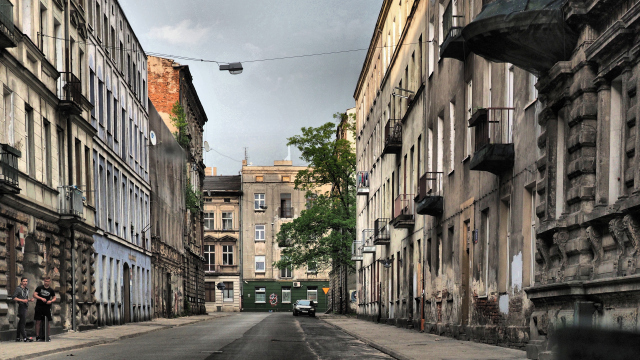
| |
|
I continue moving ahead with the E-M1X article, including another hands-on session. No surprises, but no image samples either: one night is just not enough. This is not much of a problem, though, at least not in most cases: there are quite many image samples on the Web, and some of them can be useful — if you know how to look at them. There is, however, one area where I could use some help from an owner (or owners) of an E-M1X: measuring the effectiveness of image stabilization. This is a serious effort: it takes 300 or so frames per one focal length, and I'm doing the data processing; more about this project in a few days. In the process of gaining familiarity with this camera, I just arrived to one of the really interesting places: the handheld version of sensor-shift High Res mode. While the tripod version remains unchanged (it used to work very nicely, thank you), the handheld one is something entirely different, and I need some time to understand it plus some image samples to see how effective it is. Sorry, no instant gratification. There is a side effect to these efforts: an update to E-M1 Mk.II High Resolution Mode and its sequel.
| Picture of the Week: the tin rooftops of Paris, as seen from the Notre Dame bell towers, 1981. This was my first visit to Paris (thank you, U of DE!), and the only one when I had time to do some sightseeing.
Minolta xD-5, 28 mm F/2.8 Tokina lens Scan Cafe turned out a disappointment, especially with Kodachromes; even those looking good when optically projected, turned out too contrasty, dark, and grainy in scans. See the reduced whole frame or a 1:1 fragment of the original scan. Update: A few days after I posted this, the Notre Dame was on fire. We all lost something.
| 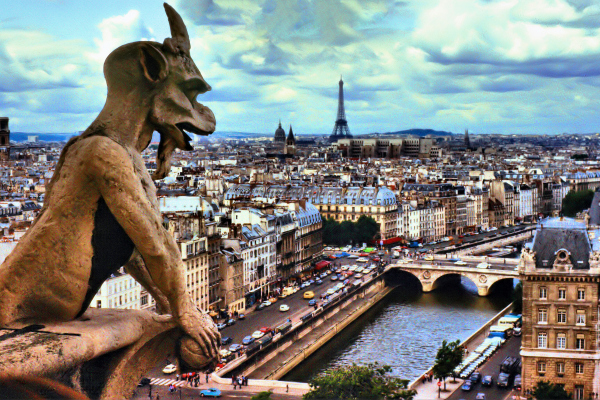
| The Pocket story continues. Remember the GPD Pocket 2 mini-laptop I wrote about last August? I was hoping to get one, but still haven't made my mind, as things got more interesting lately: not only did Pocket 2 get a real competition (the One Mix 2S, with up to four times the storage!), but both companies upgraded their products to a faster processor just a few weeks after introduction. Besides, while not a speed demon, my original GPD Pocket is still doing just fine (the text also has been updated). Maybe I can wait a bit longer, until the dust settles (not to mention a backlit keyboard)?
It's the U.S. law now: an executive order of President Donald Trump sets the new, legal and official value of pi to exactly 3. This may turn out to be the biggest (and most overlooked) legacy of this presidency.
| So you've been complaining about my Picture of the Week becoming too predictable? How about this one then, shot a few minutes before sunrise over the treetops in Tikál, Guatemala (2000). This must have been one of the last rolls of film I've used, before going fully digital later that year with the Olympus C-3000: 1/1.7", 3 MP. Never looked back.
Minolta 600si, 28-135 mm Tamron zoom
| 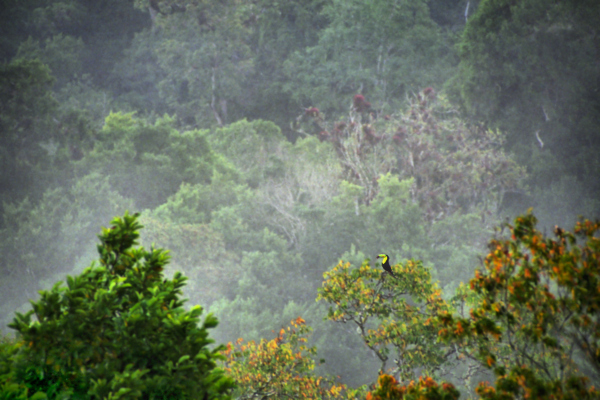
|
More progress on the E-M1X front, but not necessarily the kind I expected. The more familiar I'm getting with this camera, the more I tend to see it as a dead-end path of evolution. With all that great technology (some of it nothing short of brilliant), the effort is largely wasted: there is an elephant in the room, and his name is Dual Grip. Bigger, better-polished stone tools.
Refer to my brief note on multi-aspect sensors. Whoever does this right first, will send vertical grips the way of the dodo, where they belong. Do not misunderstand me: this camera is loaded with technological excellence; the controls have been tweaked just the right way (I'm done with that section, too); it's just this stupid Jumbo, with his tiny, beady eyes... Oh, well. Give me a few more weeks. | |||
|
I've been quite busy lately, among others, collecting information on the Olympus E-M1X, just made available, in the U.S. at least. Moving ahead...
| The E-M1X by Olympus is here — or will be shortly, announced just last week (see the press release). No, this is not E-M1 Mk.3, a successor to the Mk.2 flagship, but rather the first model in yet another line of OM-D cameras, concurrent with the E-M1 (and, to some extent. competing with it as the second pro option). My first impression is somewhat underwhelming. The specs, as good as they are, show rather incremental improvements from E-M1 Mk.2 (with some increments, admittedly, quite significant), and I have no doubt that the make and finish quality at least match that camera. Still, nothing to knock your socks off. The new form factor comes at a considerable expense in terms of body weight and size. The body is priced in the U.S. at $3000 (compared to $1500 for the E-M1 and $2000 for Mark II).
| 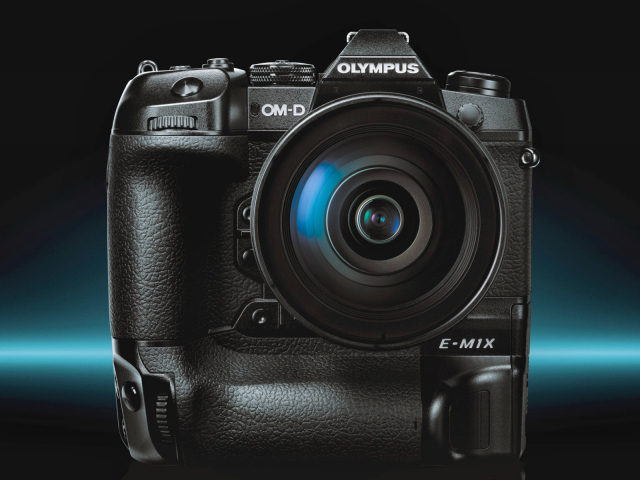
Promotional picture © 2019 by Olympus Corporation
| The only obvious new feature is the built-in vertical grip, with some of the controls duplicated for shooting in the portrait orientation (and with room for two batteries). While it may be argued that this puts E-M1X in the "pro gear" league, it also almost doubles the body weight. For some users (including myself) this may be a deal-breaker. Some people will just love this camera; others will remain indifferent. Only if the first group is large enough, it will make the camera commercially viable (assuming it does not undercut sales of the E-M1). Frankly, I doubt this will happen. Still, I may be wrong on this, and I hope I am. Olympus has been in this business for 100 years, and I assume they did some market research before jumping in. For more information and some related thoughts, see my upcoming E-M1X article — at the moment a mere stub, but under vigorous development. | ||
 |
 |
 |
 |
 |
 |
 |
| Home: wrotniak.net | Search this site | Change font size |
|
Posted 2006/01/30; last updated 2019/09/22
|
Copyright © 2006-2019 by J. Andrzej Wrotniak
|